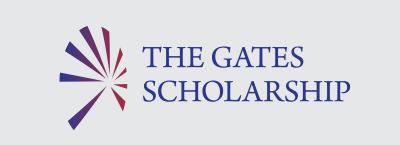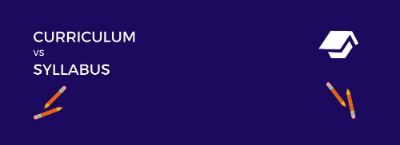You are discussing with university students what exams they take to enter the university. Some of them will answer TOEFL, and others IELTS. You might even talk to different people admitted to the same course, still passed different exams.
The two exams have the same purpose of assessing your English proficiency, and generally, the method is the same. So, which test is better, and what you should start practicing?
Find the answer in the following sections, which will navigate you through the main differences between TOEFL and IELTS to help make up your mind. Particularly, the article covers the following topics:
- What is TOEFL?
- What is IELTS?
- What are the main differences between the two?
- Breakdown of the tests' sections
- How to prepare and register for the tests
What is TOEFL?
TOEFL stands for Test of English as a Foreign Language. The test is introduced by an American company ETS, which also provides GRE and similar English assessment tests. The TOEFL score proves to the admitting university your English communication skills in academic, classroom-based environments.
TOEFL is mainly based on American English pronunciation and vocabulary. However, if you are inclined to British English, no worries, the test will not lower the grades. USA and Canadian universities, top universities from the UK, Australia, and other countries largely accept TOEFL.
There are two main types of TOEFL: paper-based and computer-based. The latter is administered over the internet, and you will meet it under the abbreviation iBT. All the TOEFL information in this article is related to iBT as the most popular type of test.
What is IELTS?
IELTS is an abbreviation for International English Language Testing System. Its purpose is to certify your English proficiency in immigration, employment, and academic goals.
IELTS is jointly offered by the British Council, IELTS Australia, and Cambridge Assessment English. You might guess that the test is more inclined to British English. However, similar to TOEFL, there is no problem to pass the test if you use American English.
There are General and Academic versions of IELTS. You can take the General test if you want to apply for an immigration visa or a job requiring English skills. Otherwise, for applying to educational institutions, you will need the Academic IELTS. In this article, you should understand the Academic type of the test each time IELTS is mentioned. With the test, you can apply mainly to UK universities, also to Europe and Canada.
What are the main differences between the two tests?
The core method of evaluating your language proficiency is the same for both tests. You pass the sections of Reading, Listening, Speaking, and Writing for both. You should also register in advance for the two tests, which cost around 160-300 $ depending on the location.
Below you will read the main differences between TOEFL and IELTS not identifiable at first glance.
Question types
TOEFL questions are mainly multiple-choice, whereas, in IELTS, students complete short answers and gap-filling questions. Also, TOEFL offers more time to complete the test. Usually, it takes around 4 hours to pass TOEFL and 2,5 hours for IELTS.
Human Interaction
TOEFL is fully computer-based. Students do not interact personally with test assessors. For the speaking section, test takers record their speech, which is later sent for checking. In the case of IELTS, you will directly communicate with the examining person.
Scoring
Both tests do not separately focus on grammar. However, TOEFL will pay more attention to the logical flow of constructed speech and essays. IELTS will evaluate grammar and vocabulary richness stricter.
Grade calculation
Each of the four TOEFL sections weighs 30 points, and the final grade is calculated by summing up all your collected points for each section. Consequently, the highest grade you can get in TOEFL is 120. IELTS grades vary from 1-9, and the final grade is the average of four test results. Also, IELTS rounds up your grade to the nearest high half-band. TOEFL doesn't round the results.
Breakdown of sections
This section should be the most interesting for you to choose between the tests. Read about the technical structure of four sections and what you are required to complete for each.
Reading
TOEFL: 60-80 min
IELTS: 60 min
For this section, you should read the text and answer the related questions.
TOEFL includes three to five reading assignments with 20 minutes for each. The texts are of the university textbook level and cover the topics students are most probably familiar with. 10-12 multiple-choice questions follow each text in TOEFL.
The IELTS reading consists of three texts and also gives 20 minutes for each. IELTS topics are related to academics and usually include graphs and charts. IELTS topics can be found in sources like journals and magazines. The questions that follow IELTS reading texts are of various formats, including filling the gaps, typing short answers, etc. Each text has around 10-15 questions.
Listening
TOEFL: 40-60 min
IELTS: 30 min
For this section, you listen to the recorded speech and answer related questions.
For TOEFL listening, you should listen to 4-6 short lectures, classroom discussions, and conversations. After you listen to the recording, the multiple-choice answers appear on the screen. Altogether, you will be asked 34-51 questions and can not replay the recording. So, it's essential to take quick notes when listening.
IELTS listening tasks include four monologues or conversations of everyday social and educational context. Unlike TOEFL listening, here you should write down your answer about the recording on the paper. IELTS passers are allowed to write down their reply while the recording is playing. This section's questions may include multiple-choice, matching, diagram labeling, sentence completion, and short answer.
Speaking
TOEFL: 20 min
IELTS: 11-14 min
To assess your speaking skills, you will need to answer short questions.
For the TOEFL speaking section, the computer asks you a question. You then have time to prepare and record your answer. The first two questions are related to your personal opinion on certain topics. The other four are integrated tasks, meaning you will have to combine text and audio, or two audios to answer a question. TOEFL test records your answer and sends it to examiners for checking.
IELTS speaking assignment requires you to have a personal conversation with the examiner. During the discussion, you are alone with the interviewer, and they record your speech on a type. For the first question, the interviewer will ask you a general question from everyday life. After that, you will have a card with the topic, for which you will have 1 minute to prepare and two minutes to speak. During the next stage, you and the examiner will discuss the topic. IELTS speaking score is based on the interviewer's opinion solely. Also, you may have your speaking test on a separate day from the rest test sections.
Writing
TOEFL: 50 min
IELTS: 60 min
The last part of the test checks your writing skills through 2 tasks.
The first TOEFL writing task requires writing an essay of around 300 words about the presented topic. From the 50 overall minutes to the writing section, 30 minutes go to this part. For the second, integrated task you will listen to a short passage, read a text, and write a summary of both. The word limit for this part is around 225 words. Usually, text and audio contradict each other on the same topic. As you might guess, you should have quick typing skills and good grammar. The typing window inside the test does not suggest autocorrection.
IELTS writing asks you to interpret a visual object such as a graph or chart for the first assignment. The allocated time for it is 20 minutes, and you should write at least 125 words. For the second task, which gives you 40 minutes, you should write an essay on the topic given to you. The topic is presented in the form of opinion or argument. You should write at least 250 words for this part. Unlike TOEFL, the IELTS writing task is written on paper.
How to prepare and register for the tests
Both TOEFL and IELTS are exams where it's very important to be accustomed to the exam technique and be trained to manage all the assignments within the given time. In parallel to developing good English vocabulary and grammar, you should repeatedly practice the tests until you feel you are ready to complete certain tasks at a certain time.
Many students claim they got nervous and confused because of the time constraint and didn't perform their best on the test. Others also complain because of the noisy environment, even though in most test centers, there are people who should control the silence.
IELTS is relatively free from this issue. However, several people with you are sitting in the same room during the TOEFL test, typing and recording their answers. So, to prepare you for the environment, make yourself well familiar with the technical moments of the test you are going to take. As a next step, practice as many tests as you can so that you already start completing them mechanically.
Both TOEFL and IELTS have their official websites where you can access all the information related to test days, registration procedures, and test information. Enter the ETS website for information on TOEFL and IELTS website for the test details, where you can also find free trial tests.
Additionally, you may access free practice tests in other sources.
Find free TOEFL practice tests at:
Find free IELTS practice tests at:
You may also search for local test centers, where you can take a practice test for a low fee. In such centers, the quality of checking will be non-professional and may differ from test examiners' actual approach.
The grades you will receive at the end of practice tests will have no relevance for any educational institution. However, you will gain a good experience to pass tests in a real-like environment and give yourself good preparation.
Published on Jan 22, 2021











